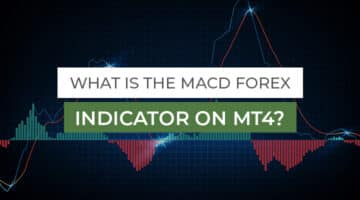What is a COT Report?

In this article
The Commitment of Traders report is abbreviated as COT report, which acts as the weekly sentiment indicator. With this indicator, traders will be able to track and monitor the trading information related to the current positioning of currency pairs.
Thus, with the COT report, forex traders will understand how the big trading players in the forex market are playing. This includes hedge funds. You will find enormous use in different profitable trading strategies.
This article discusses exactly how to use Commitment in Trader Report, also known as COT Report on Forex, and how to read Cot Report yourself. This will take you to a tutorial for COT analysis in Forex trading, so don’t forget to make notes.
You can also see the COT tables, fully understand how they work, and do it yourself in the tutorial.
What is meant by traders’ commitments (COT) report?
Reports generally publish weekly about traders’ commitments (COT). This publication displays various aggregate assets of different participants in futures markets in the US. The Commodity Futures Trading Commission (CFTC) published this report every Friday at 3:30 ET.
Since Tuesday, it has highlighted a snapshot describing the actual performance of different classified trading groups associated with the market.
Many futures traders use it as a market signal for trading. The Traders Commitment Report (COT) is a weekly magazine that shows the total assets of various participants in the US futures market. These are edited and published by the US CFTC. The
The COT report details the number of long, short, and spread positions that make up an open profit. Traders can use this ratio to determine whether a transaction is short or long.
There are four different COT relationships: inheritance, supplemental, individual and financial futures trader relationships.
How do the commitments of traders report (COT) work?
It has been publishing COT reports since 1924 when the USDA’s Grain Futures Administration published a report summarising hedging and speculative activities. It was published monthly beginning in 1962. The report went from a biweekly publication to a weekly one in 2000.
The report, published every Friday, is compiled and verified on Tuesday. In addition, a graphical representation of data is provided in the report. It aims to assist readers in understanding the market dynamics.
Following the US Department of Commerce, “each Tuesday’s open interest for futures and options on futures markets held by 20 or more traders equals or exceeds the CFTC’s reporting standards.”
Traders can use the report to determine whether they should take a short or a long position in a trade. However, a legal restriction prevents the report from categorising individual traders’ positions. Commission officials explain that this is part of their confidential business practices.
Analysing the COT report for FX trading
It is helpful to understand the different players in the report to gain insights into price fluctuation. A non-commercial trader, for instance, is usually a price speculator and trades in the direction of expected price movement.
Commercial traders are more likely to place trades to lock in gains for clients than to hedge risks, and they tend to do so in a direction opposite to that predicted by the market.
In contrast to these categories, non-reportable traders take opposite positions. Knowing the net position helps determine the market’s sentiment. Since many traders align with non-commercial traders, they concentrate on this category.
The net position indicates that traders and speculators are “net short.” The extended contracts outnumber the short contracts, indicating that the market is generally bearish.
If traders have a favourable net position, they are “net long.” Here, the number of long contracts exceeds the number of short contracts, which indicates a bullish market outlook.
The three main groups from the COT report
- Commercial Traders – These are usually large multinational corporations with a commercial interest in hedging the risks in their respective futures markets. For example, a major Japanese manufacturer may wish to hedge their exposure to fluctuating USD/JPY exchange rates.
- Non-Commercial Traders – Typically, these data are related to speculators who primarily invest in specific futures markets, such as Commodity Trading Advisors and similar large organisations. For example, one major commodity fund bets on Euro forex futures in anticipation of the US Dollar appreciated against the Euro.
- Non-Reportable Traders – These traders do not fall into either of the two categories above. It is not uncommon for COT reports analysis to ignore small speculators, arguably not as significant. In this context, leveraged traders refer to individuals without deep pockets who lose money when markets move significantly.
Types of COT reports
The COT Report includes four reports: the Legacy Report, Supplemental Report, Disaggregated Report, and the Traders in Financial Futures Report.
1. Legacy
Traders are most familiar with the legacy COT. Open-interest positions break down all contracts with more than 20 traders. In this way, the legacy COT displays long, short, spread, and unreported positions (small traders) for commodities as well as a method of removing unreported positions (small traders). Open interest is shown both in total and in change.
By providing an overview of what market participants think, the COT can identify whether a trend will continue or end. Commercial and non-commercial long positions increasing simultaneously, for example, would be a positive sign for the underlying commodity’s price.
2. Supplemental
The supplemental report contains information about 13 specific commodity contracts. This includes both futures and options contracts. The open interest positions are broken down into three categories. Noncommercial, commercial, and index traders are included.
3. Disaggregated
Another report that traders are familiar with is the disaggregated COT report. Again, there is a more detailed breakdown of participants in the market, dividing commercial traders into producers, merchants, processors, users, and swap brokers.
There are also non-commercial participants, including managed money companies and other reportable entities.
A clear picture is provided to give an idea about what kind of users exist in the market and what they think about the market to gain profit. In addition, this disaggregated COT report responds to some of the criticisms of the legacy COT.
4. Traders in Financial Futures
A trader in Financial Futures is the final part of the COT Report. Different contracts are described here, such as US Treasury bonds, stocks, currencies, and euros are also part of it. The third report includes a classification for dealers and intermediaries, asset managers and institutions, leveraged funds, and other reportable.
What to read in the commitment of traders report?
Traders who are new to the market may find the report very confusing. However, the report will become easier as you gain experience. This report uses data from clearinghouses, brokers, and exchanges.
- Non-Commercial: these are a variety of non-profit organisations. Hedge funds, industry associations, and other institutions make up non-commercial organisations. In most cases, traders involved in the market for speculative purposes are usually involved.
- Commercial: The commercial sector involves big companies that employ the market for hedging purposes. Some examples are sizable international trade organisations such as airlines, commodities traders, and others.
- Long: CFTC long positions have been reported as net long.
- Short: These are the net short positions reported all the time.
- Open Interests: Unexecuted or undeliverable contracts are called open interests.
A certain number of traders are required to report to the CFTC. Options and futures positions that must be reported are referred to as reporting positions.
The number of non-reportable positions is the number of open interest positions that do not meet CFTC reporting requirements.
Reasons why sentiment is important for trader’s commitments
Trading moves are heavily influenced by the sentiments of other investors and traders. Market traders have opinions regarding the future price of shares, currencies, and commodities.
In some instances, traders can be wrong, while they can be right too in other cases.
- Participants in this market include:
- Hedgers (commercial traders)
- Those who trade non-commercially
- Wholesalers and retailers
Although essential, these sentiments do not always satisfy traders. For example, suppose 80% of the participants believe in going long EURUSD, but something significant like an interest rate announcement happens. That will then give the minority a voice.
Traders and investors need to have faith in their analysis and opinions to succeed.
1. Analysis before buying, selling, or holding
It is essential to conduct a thorough analysis before buying, selling, or holding an asset based on its fundamentals or technical indicators. For example, the Commitments of Traders report does not matter if you believe the EUR/USD will rise.
These sentiments have caused many investors to lose money.
2. Hedger
A hedger, also known as a commercial trader, uses COT to protect themselves from sudden and unplanned asset price movements.
A sudden increase in interest rates, for instance, will lead to a sharp rise in the market, and many investors will lose money.
Traders have always taken steps to protect their money to avoid this situation. As a result, when the market is low, the hedgers are usually very bullish, while they’re usually very bearish when an asset is trading at a high point.
In a down market, it is believed that the chances of the market reversing are high. Also included in this category are significant hedge funds and investment banks, as they seek protection from sudden changes.
3. Speculators
Large speculators and non-commercial institutions, on the other hand, will not acquire an asset. Instead, market-entry, profit-making, and exit are their objectives. Additionally, Hedge funds hold assets for a few months or years.
A large speculator seeks out trends and then bets that the trend will continue and then enters positions.
People and companies who often participate in futures markets have a lot of money. Due to this, traders’ decisions are critical when checking the Commitment of Traders and can move the market considerably.
Furthermore, they often study the trend by using moving averages.
4. Retail traders
Retail traders are yet on the wrong side of the market and are more minor market participants. Their sentiments are seldom all that important to the market, so they cannot move them.
What is the recommended frequency of reporting cots?
For markets with 20 or more traders holding positions equal to or above the reporting levels set by the Commitment of Traders (COT) reports each Tuesday, the reports provide a breakdown of open interest for each market. COT charts are updated every Friday at 3 p.m. CT.
FAQs
1. COT Reports: How Do You Read Them?
Each column and row is clearly labelled according to its purpose. The report provides information about the level of interest, both long-term and short-term, in various derivatives contracts and what types of market players are involved.
2. COT Reports: Where Can You Find Them?
COT reports are available on the CFTC website and can be downloaded in several formats.
3. What Are the Uses of a COT Report in Forex Trading?
Forex traders may use currency derivatives COT reports to find prominent net long or net short positions. They may indicate that the market is about to reverse.
4. How Does a Gold COT Report Work?
COT reports would list gold derivative holdings.
5. Open interest in COT report: What is it?
In the world of futures and options, open interest is the amount of futures and options contracts entered into but not yet offset by a transaction, delivery, or exercise. All open interest in long and short positions is equal.
Bottom line
An alternative to stock volume indicators can be the COT report, a handy tool. You can use absolute long and short positioning and historical comparisons to identify market extremes. In addition, market reversals can be predicted in the medium term by observing percentage changes in open interest.
The COT data would be the ultimate technical indicator if there ever were one. But, well, one should not put all the eggs in just one basket, as it was always said. Hence, it is better to confirm COT signals with data from other technical and fundamental analysis elements before making a final decision.
Jason Morgan is an experienced forex analyst and writer with a deep understanding of the financial markets. With over 13+ years of industry experience, he has honed his skills in analyzing and forecasting currency movements, providing valuable insights to traders and investors.
Forex Content Writer | Market Analyst
Relevant Posts

How to Make Forex Trading Easier
[top_three_brokers] Forex trading can be a good way to take some of your savings and…
Read more

99 Accurate Forex Trading System
[top_three_brokers] A 99 accurate forex trading system gives you an overall picture of when to…
Read more
Mirror Trading
[top_three_brokers] Have you ever experienced the tedium of listening politely to someone loudly brag about…
Read more

How to Handle a Bear Market
[top_three_brokers] Few things are scarier to investors than the term "bear market". Bear markets are…
Read more

Forex Guru – An Anonymous Provider of Forex Signals
[top_three_brokers] Forex Guru is an anonymous provider of forex signals. But, in the Forex market,…
Read more
Engulfing Candlestick
[top_three_brokers] Right through this guide, we will have a detailed discussion about what engulfing candlestick…
Read more

Oinvest Minimum Deposit
[top_three_brokers] [single_affiliate title="" id="12284" size="big"] FSCA licence 42020 is issued to Oinvest, a forex broker…
Read more

What is the MACD Forex Indicator on MT4?
[top_three_brokers] Right through this guide, we will have a detailed discussion about the MACD forex…
Read more

What is Swing Trading in Forex?
[top_three_brokers] Let's get into a discussion about what swing trading is in forex. A swing…
Read more

FSB Broker
[top_three_brokers] FSB, or Financial Services Board, was the main financial regulatory body of South Africa.…
Read more

How to Make Forex Trading Easier
[top_three_brokers] Forex trading can be a good way to take some of your savings and…

99 Accurate Forex Trading System
[top_three_brokers] A 99 accurate forex trading system gives you an overall picture of when to…
Mirror Trading
[top_three_brokers] Have you ever experienced the tedium of listening politely to someone loudly brag about…

How to Handle a Bear Market
[top_three_brokers] Few things are scarier to investors than the term "bear market". Bear markets are…

Forex Guru – An Anonymous Provider of Forex Signals
[top_three_brokers] Forex Guru is an anonymous provider of forex signals. But, in the Forex market,…
Engulfing Candlestick
[top_three_brokers] Right through this guide, we will have a detailed discussion about what engulfing candlestick…

Oinvest Minimum Deposit
[top_three_brokers] [single_affiliate title="" id="12284" size="big"] FSCA licence 42020 is issued to Oinvest, a forex broker…

What is the MACD Forex Indicator on MT4?
[top_three_brokers] Right through this guide, we will have a detailed discussion about the MACD forex…

What is Swing Trading in Forex?
[top_three_brokers] Let's get into a discussion about what swing trading is in forex. A swing…

FSB Broker
[top_three_brokers] FSB, or Financial Services Board, was the main financial regulatory body of South Africa.…



